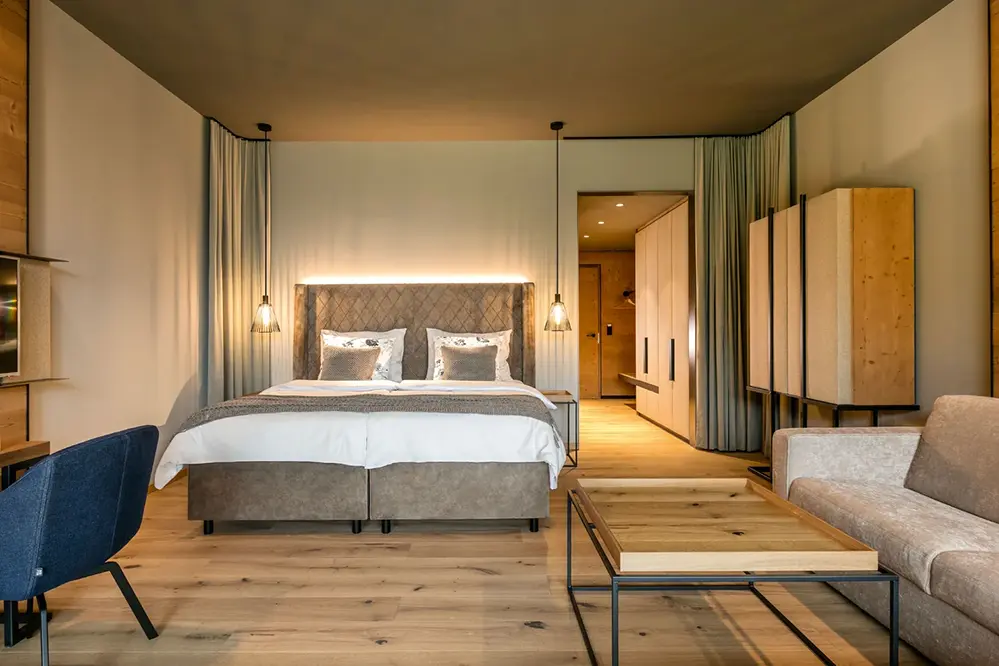In the heart of a bustling city, a boutique hotel transformed its guest experience overnight by simply changing its lighting. The secret? Learning how to use LED light for hotel room enhancement. This seemingly small adjustment not only elevated the ambiance but also significantly increased guest satisfaction scores.
The importance of lighting in hospitality cannot be overstated; a study by the American Hotel & Lodging Educational Institute found that 90% of guests consider lighting a crucial factor in their overall hotel experience. As hoteliers strive to create memorable stays, understanding the power of LED lighting becomes essential.
Dive into this illuminating journey to discover tips on how strategic lighting can redefine your hotel’s atmosphere and leave a lasting impression on your guests.
Benefits of LED Lights in Hotel Rooms
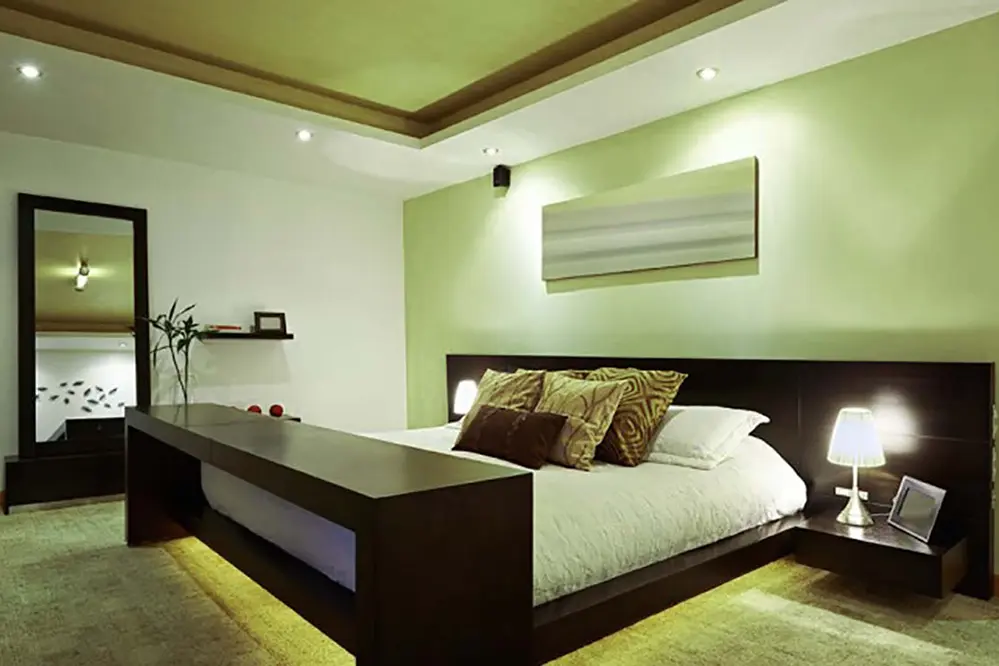
Efficient LED lighting is not just a trend; it elevates hospitality experiences while cutting operational costs.
Firstly, the energy efficiency of LEDs offers a transformative advantage for hotels seeking sustainability. This innovation not only reduces power bills but also contributes to the global initiative of decreasing carbon footprints. Guests appreciate these eco-friendly efforts, which can enhance a hotel’s reputation while promoting responsible travel and tourism. The ability to save energy allows hotels to reallocate resources toward further amenities.
Additionally, LEDs offer a variety of color temperatures and dimmable settings, creating an appealing atmosphere. By customizing the mood of a room, hotels can cater to different guest preferences, enhancing relaxation or productivity through strategic lighting design.
Moreover, LED lighting’s longevity results in lower maintenance needs and costs, allowing hotels to stand out by providing a reliable lighting solution. This robustness reduces the challenge of frequent replacements, ensuring operational reliability. Durable and versatile, LED lights can transform every hotel stay into an exemplary experience of modern comfort and sustainable luxury.
Enhancing Ambiance with LED Lighting
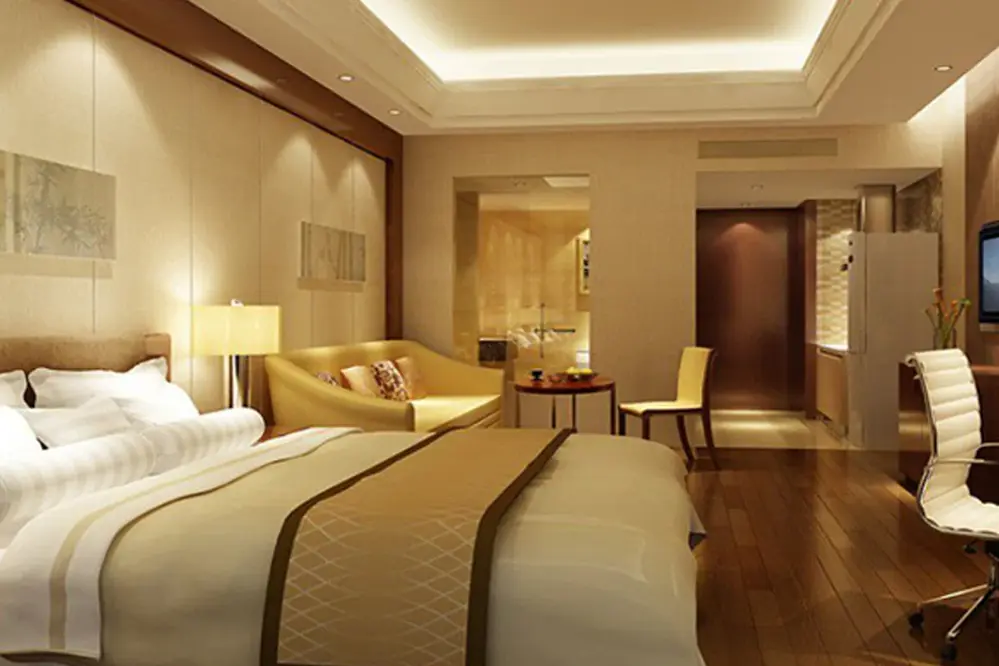
LED lights are a remarkable tool, making transformative changes to hotel rooms by redefining ambiance and elevating the guest experience.
By embracing the unique attributes of LEDs, hotels can sculpt a welcoming escape tailored to each guest’s desires. Whether seeking tranquility or vibrancy, the adept use of adjustable LED systems can turn any room into a personal oasis. This adaptability not only creates an inviting and memorable environment but also appeals to the modern traveler seeking unique experiences.
The strategic placement of LED lighting can subtly accentuate architectural details. In addition to enhancing aesthetics, well-designed lighting schemes emphasize the distinct character of each space. Customized installations can highlight artwork, create focal points, and underscore the exclusive design philosophy that sets a hotel apart.
Ultimately, using LEDs to enhance a room’s ambiance encourages guest satisfaction and retention, which are integral to a hotel’s success. By leveraging innovative lighting techniques, hotels position themselves as leaders in hospitality, offering not just a place to stay, but an unforgettable experience. A well-lit room transcends mere function, inviting guests to discover the harmonious blend of comfort, elegance, and sustainable sophistication.
Energy Efficiency and Cost Savings
LED lighting is an unequivocal champion in the realm of energy efficiency, providing notable reductions in utility expenses. In recent years, advancements in LED technology have revolutionized energy consumption, allowing hotels to decrease their carbon footprint significantly while preserving the amenities that guests expect. These lighting solutions are tailored for long-term operation, consuming markedly less electricity than traditional incandescent or fluorescent fixtures.
For hotels, this translates to more than just energy conservation; it’s an opportunity to foster a culture of sustainability without compromising luxury. A commitment to integrating LED lights can lead to substantial financial savings—resources that can be reinvested to enhance guest experiences or improve other operational facets. The cost-effective nature of LEDs is underpinned by their prolonged lifespan, which also lowers maintenance costs.
Beyond monetary savings, embracing LED technology signals a crucial shift in industry standards towards environmentally-responsible practices. Guests increasingly value green initiatives, and LEDs provide a practical yet powerful symbol of a hotel’s dedication to environmental stewardship. Investing in energy-efficient lighting not only reduces overheads but also builds a reputation of progressive, eco-friendly hospitality.
Furthermore, the quick payback period of an LED retrofit—often less than two years—ensures that the initial investment swiftly returns value. This financial resilience makes LEDs an appealing choice for hoteliers committed to marrying fiscal prudence with cutting-edge guest-centric enhancements. Together, cost savings and sustainability reinforce a hotel’s competitive edge in today’s hospitality landscape.
Implementing LED lighting in hotel rooms is a winning strategy for reducing costs and enhancing sustainability.
Choosing the Right LED Light for Hotel Rooms
Selecting the ideal LED light requires a well-balanced approach that prioritizes guests’ comfort and the room’s aesthetics. This prudent choice not only reflects on the ambiance but also contributes significantly to energy efficiency, ensuring a seamless blend of form and function. By evaluating various factors such as color temperature, brightness, and energy consumption, hoteliers can offer a superior stay experience while promoting sustainability.
To achieve the desired atmosphere, it’s crucial to consider the nuances of each lighting application (e.g., task, accent, ambient). Each play a vital role in transforming a space, and understanding these elements is instrumental in making informed decisions that align with a hotel’s brand identity. The right illumination elevates the guest experience, delivering a touch of modernity and sophistication that guests will remember.
Branding LED lighting as “eco-smart” or “eco-inspired” further accentuates its role in the hotel’s unique appeal.
Factors to Consider in Selection
Choosing the perfect LED light encompasses efficiency, aesthetic harmony, and enhancing the guest’s immersive experience.
LED lighting revolutionizes energy savings, with up to 80% more efficiency than traditional lighting systems.
Prioritizing the color temperature is essential—warmer tones create a cozy ambiance, while cooler shades promote alertness. Energy consumption rates also deserve attention, ensuring cost-effectiveness without compromising quality or comfort.
Understanding the hotel’s branding and guest expectations is fundamental. Selecting dimmable options adds versatility, transforming spaces to suit different moods, reflecting a commitment to innovation and guest satisfaction.
Comparing LED Light Types
The nuanced world of LED lights offers compelling choices for hotel room enhancement, balancing aesthetics with functional brilliance.
- LED Strips: Versatile for under-cabinet lighting or intricate architectural features.
- LED Bulbs: Ideal for general illumination, fitting most traditional fixtures.
- LED Panels: Sleek, modern options for ceilings and expansive light distribution.
- Smart LEDs: Adjustable via apps, offering a spectrum of colors and brightness.
Understanding these types empowers you to tailor lighting environments that harmoniously blend sophistication and utility.
Such strategic lighting implementations significantly enhance guest satisfaction, aligning with contemporary environmental and design standards.
Optimal Placement for LED Lights
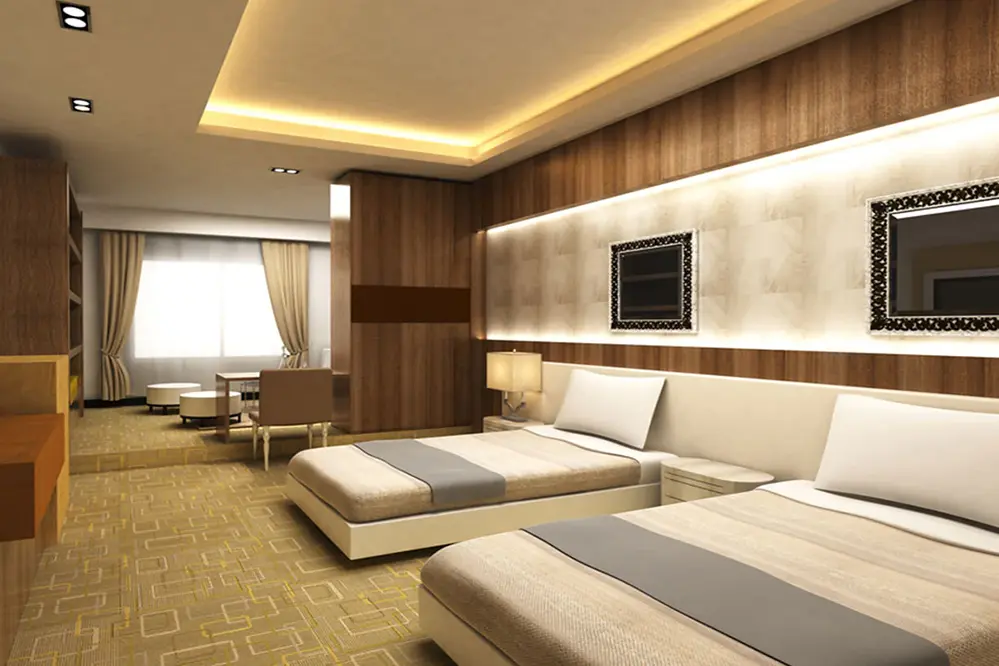
Achieving optimal placement for LED lights requires thoughtful consideration of room dimensions, design themes, and guest preferences to create a captivating and functional visual experience.
First, installing LED strips under cabinets or along architectural features provides elegant accentuation.
Next, strategically position LED bulbs to ensure broad, even illumination, ideally in central fixtures such as chandeliers.
LED panels are best placed in ceiling areas where expansive brightness is desired, offering both aesthetics and amplitude.
Smart LEDs should be installed in areas where adjusting lighting conditions via apps enhances user experience, such as bedside lamps or desk lighting.
Thus, the art of brilliantly enhancing a hotel room’s ambiance with LED lighting lies in strategic placement, tailored to transform and elevate the guest experience.
Innovative LED Design Ideas
Embrace the transformative power of LED technology to elevate your hotel rooms’ ambiance and functionality. By incorporating dynamic LED designs, architects can create distinctive atmospheres that captivate guests and enhance their experiences.
For instance, using adjustable color temperature LEDs allows guests to customize their lighting, making it possible to transition seamlessly from invigorating morning tones to soothing evening settings with a simple touch.
The terms “ambiance” and “atmosphere” are often interchangeable in the realm of guest experiences.
Accent Lighting Techniques
Accent lighting can elevate the room’s atmosphere.
Thoughtful placement can turn even the most mundane nook into a captivating focus. By using LED light strips under furniture or around decor elements, you create an inviting glow and add depth to the room. Additionally, highlights on artwork or architectural details emphasize the hotel’s unique characteristics.
Subtle lighting enhances room charm.
Consider varying the intensity of accent lights – as the day progresses from sunlit mornings to the cozy warmth of dusk – to reflect natural transitions and complement the overall room design.
Accent lighting solutions for hospitality settings should offer technologically advanced yet aesthetically pleasing options, aligning with the innovative trends of a new year that focus on both style and sustainability. This clever blend of efficiency and elegance allows hotels to cultivate memorable guest experiences through visually compelling, energy-efficient environments.
Using LED Strips Creatively
Leveraging LED strips can significantly revitalize hotel room aesthetics, offering endless creative possibilities and enhancing guest experiences effortlessly.
- Under-Bed Lighting: Installing LED strips beneath the bed adds a luxurious floating illusion while providing subtle night illumination.
- Ceiling Accents: Embedding strips around tray ceilings introduces a warm, inviting atmosphere, emphasizing architectural elegance.
- Backlit Headboards: Utilize LED strips to highlight headboards, crafting a striking visual centerpiece without overwhelming the room’s ambiance.
- Frame Artworks: Outline framed paintings or mirrors with LED strips to draw attention and add depth to decor.
- In-Cabinet Lighting: Enhancing cabinets or minibars with internal LED lighting offers both style and functionality for guests.
Installing these creative solutions transforms ordinary rooms into vibrant, inviting spaces, etching a memorable impression on guests.
By integrating these innovative LED applications, hotels can enhance their design narrative, driving customer satisfaction and loyalty.
Smart LED Lighting Controls
Incorporating smart lighting controls, a pinnacle of technological innovation, allows hotel rooms to adjust ambiance effortlessly. Guests can personalize their lighting experience through intuitive apps or voice commands, transforming their environment into a haven tailored to their preferences. Embracing cutting-edge solutions, such as automated dimming and color changes synchronized with time or mood, elevates each stay, ensuring unparalleled comfort and convenience.
Automation and Convenience
Harnessing the power of LED automation offers hotels a pathway to enhanced guest experiences, complementing modern lifestyles with unparalleled convenience.
- Smart Lighting Systems: Automate lighting scenes to match different times of day or activities, from vibrant mornings to serene evenings.
- Voice-enabled Assistance: Integrate lighting controls with smart assistants, allowing guests to adjust settings effortlessly through voice commands.
- App-controlled interfaces: Provide guests with intuitive smartphone apps to control room lighting from anywhere, personalizing their environment at their fingertips.
- Motion Sensors: Implement sensor-based lighting activation to increase energy efficiency while ensuring seamless navigation at night.
Elevating guest convenience through automation not only impresses visitors but also streamlines hotel operations.
By embracing LED automation, hotels can set themselves apart as leaders in innovative hospitality solutions, attracting discerning travelers.
Personalization for Guests
By harnessing the versatility of LED lighting, hotels can offer bespoke lighting experiences that resonate with guests’ individual preferences, adding a delightful personal touch.
Hoteliers can provide guests with unique ambiances tailored to their liking.
This distinct personalization is achieved through creating diverse lighting presets that guests access via a simple interface. Whether a guest desires a calming retreat or a vibrant setting for celebration, they can immerse themselves with ease in atmospheres that reflect their mood.
Moreover, offering a spectrum of choices enables hotels to stand out from the competition by delivering a rare blend of comfort and novelty. By encouraging guests to customize their environment, hotels win the loyalty of travelers who value distinct, personalized experiences. In this way, guests feel like “owners” of their tailored space, ensuring their stay is memorable.
Creating a Relaxing Atmosphere
Relax and unwind with the artful use of light by following essential tips for placement and color selection.
A strategic application of LED lighting can transform any hotel room into a tranquil sanctuary. By using soft hues like warm whites and gentle blues, you invite a sense of calm that lulls guests into relaxation. Additionally, placing LED strips in hidden spots, such as behind headboards, creates an enchanting, soothing effect that enhances the serenity of the space.
Consider the power of ambient lighting when crafting tranquil environments.
The key lies in employing dimmable LEDs which allow guests to adjust light intensity to suit their mood – offering bright illumination for a lively atmosphere or a soft glow for a peaceful evening. This ensures guests have a personalized oasis tailored to their preference.
Seeking to stay ahead in the hospitality industry, hotel operators should embrace these subtle yet impactful innovations. Lighting technology isn’t just about illumination; it’s about embracing new ways to enhance guest comfort and satisfaction, ultimately leading to repeat visits and glowing reviews. The path to renewed guest loyalty is illuminated by these meticulous, forward-thinking practices.
LED Lighting for Workspaces in Rooms
Incorporating LED lighting into hotel room workspaces not only enhances functionality but also elevates the aesthetic appeal of the entire space.
Well-positioned LED lamps provide focused illumination that enhances task efficiency.
The adaptability of LEDs allows hotel operators to create optimal lighting conditions for productivity. By utilizing adjustable, daylight-mimicking LED lights, hotels can offer an environment conducive to concentration and inspiration, effectively meeting the diverse needs of working travelers.
Transforming workspaces into beacons of creativity and focus involves more than just lighting fixtures. Choose lighting with adjustable color temperatures to match the ambiance of a workspace to any task, from calming warm hues for brainstorming sessions to cool, energizing tones for detailed work. In this vibrant light, guests find their creativity unlocked, productivity elevated, and their experience enriched.
Safety and Durability of LED Lights
LED lights stand as a paragon of safety and ruggedness, ensuring seamless integration into hotel environments where security is paramount.
These lights emit minimal heat, reducing fire hazards.
Engineered with advanced materials, LED lights consistently outperform other lighting in terms of longevity and resilience, offering a myriad of benefits to hotel operators focused on sustainability, reliability, and cost efficiency.
Their robust construction design ensures that even in the high-demand settings of a hotel room, LEDs maintain their performance over extensive periods. This longevity is a testament to their durability, allowing hotels to make significant strides towards their sustainability goals, minimizing maintenance workload, and saving on energy costs. Quite simply, they represent a “brilliance” that enhances both safety and long-term investment.
Environmental Impact Considerations
Incorporating LED lighting into hotel rooms brings substantial environmental benefits, aligning with modern sustainability goals.
LED lights, by their very nature, consume significantly less energy than traditional lighting solutions, leading to reduced carbon emissions. This energy efficiency translates to a decreased demand for fossil fuels, which are typically used in electricity generation, thus contributing positively to environmental conservation. Hotels that adopt LED lighting can proudly align themselves with eco-friendly practices, reinforcing their commitment to preserving the planet.
Moreover, these advanced lighting options have an extended lifespan, reducing the frequency of replacements. By minimizing waste and decreasing production demands, hotels that invest in LEDs contribute to the reduction of industrial pollution, supporting global sustainability efforts while staying ahead of environmental trends.
The adoption of LED technology in hotel rooms not only diminishes ecological footprints but also enhances brand reputation in the eyes of environmentally conscious travelers. Such actions can inspire guests and industry peers alike, showcasing leadership in sustainable hospitality practices. This transition signifies more than just a change in lighting—it heralds a brighter, greener future where hotels and their guests coexist harmoniously with the planet.
How to Use LED Light for Hotel Room Environment
Elegant LED lighting solutions transform hotel rooms into sanctuaries of comfort and style, facilitating a serene setting that appeals to discerning guests seeking luxury and innovation. With their flexible designs and vibrant illumination capabilities, LEDs offer hotels the opportunity to create bespoke atmospheres tailored to diverse client preferences.
Maximizing LED potential begins by mapping out the hotel’s brand essence and atmosphere. This thoughtful integration ensures a cozy yet sophisticated guest experience.
Strategically placed LEDs highlight architectural details and furnishings, emphasizing each room’s unique design elements. Ambient lighting can enhance relaxation, while task lighting supports practical needs.
Color-tunable LEDs are powerful tools for mood-setting, as they effortlessly transition from energizing morning hues to calming warm tones for evening unwinding. These dynamic shifts ensure guests have an optimal environment at any time.
Investing in smart LED systems with motion sensors and remote control capabilities revolutionizes energy management, encouraging a stay that’s environmentally friendly and economically efficient without sacrificing aesthetics or functionality. Connectivity with smart devices furthers room personalization.
Ultimately, the artful use of LED lighting is central to elevating a guest’s hotel experience. Vibrant, adaptive lighting transforms rooms into inviting environments, paving the way for innovative hospitality.
Common LED Lighting Mistakes to Avoid
When implementing LED lighting in hotel rooms, clarity and precision are paramount. Careful attention must be paid to avoid errors that can detract from the desired ambiance.
One common pitfall is inconsistent lighting color temperatures throughout the room.
This inconsistency disrupts the visual harmony expected in a carefully curated environment. Selection of a unified color temperature is critical for creating a coherent and calming atmosphere for hotel guests.
Another frequent error involves neglecting dimmable options or versatile settings, which are essential for adapting lighting to various needs and preferences. Striking the right balance between brightness and energy efficiency should be high on the priority list to ensure optimal guest satisfaction. These considerations transform LED lighting from merely functional to an integral part of the guest experience.
Future Trends in LED Lighting for Hotels
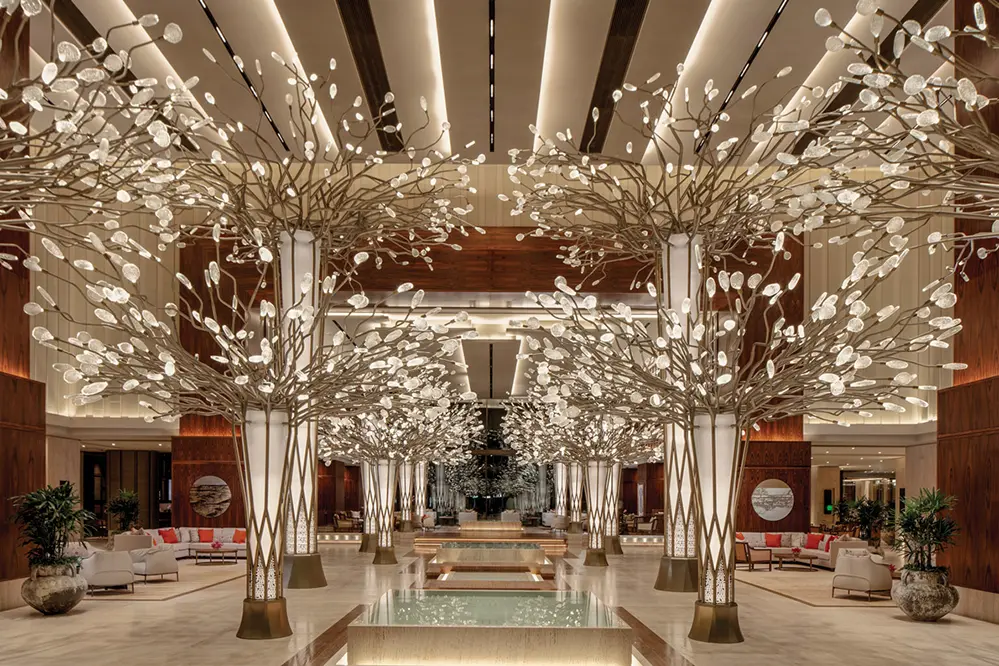
With rapid advancements in technology, the future of LED lighting in hotels is incredibly promising. One anticipated trend is the integration of smart lighting systems that tailor the lighting ambiance to individual guest preferences. These systems leverage data to create a personalized experience, adjusting to activities or moods, such as energizing morning routines or calming night settings. This adaptability not only enhances guest satisfaction but also contributes to energy conservation by utilizing lights only when and where necessary.
Furthermore, sustainability remains a driving force behind LED innovation, focusing on eco-friendly solutions. Energy-efficient LED designs, combined with renewable energy sources, will significantly reduce a hotel’s carbon footprint and operational costs in the long term. As technology continues to evolve, hotels will likely see a rise in biodegradable and recyclable materials used in fixtures, emphasizing a commitment to environmental responsibility.
Biophilic design, which incorporates elements of nature into interiors, is another emerging trend. By mimicking natural light patterns, LED technology can strengthen guests’ connection to the outdoors even in windowless spaces. This approach aligns with wellness-centred design, enhancing both psychological and physical well-being.
Finally, the integration of LED lighting with advanced AI could revolutionize the guest experience by offering anticipatory service through intelligent automation. This evolution facilitates personalized lighting adjustments tailored to sensory inputs or schedules, demonstrating how technology can elevate comfort and efficiency. Hotels embracing these trends can expect improved guest engagement and a distinguished position in the competitive hospitality market.
Conclusion
Effectively utilizing LED lighting for hotel room enhancement offers an immersive experience that captivates modern travelers. With the advent of emerging technologies, customization has become easily attainable, allowing hotels to create moods that are adaptable to various guest preferences. This strategic approach optimizes room ambiance, resulting in a visual transformation that enhances the overall guest experience.
Beyond aesthetics, the innovative use of LED lights significantly elevates environmental sustainability. By incorporating energy-efficient lighting solutions, hotels reflect responsible business practices and a commitment to wellness, aligning with the values of eco-conscious travelers. This not only benefits the environment but also positions hotels as leaders in sustainable hospitality.
Ultimately, the shift towards advanced lighting solutions is not a mere trend but a powerful tool for differentiation. By redefining luxury and comfort, hotels can set themselves apart in a competitive market. This transformative approach serves both guests and hoteliers, establishing a new standard of hospitality excellence with a lasting impact.
